Abstract
The Ian Donald International School of Ultrasound bears testament to globalization in its most successful and worthwhile form. The School was founded in Dubrovnik in 1981. Since then, the growth has been meteoric and now consists of 126 branches throughout the world. The reason for this success has been the tireless and selfless efforts of the world’s leading authorities in ultrasound who are willing to dedicate their valuable time without reimbursement to teach sonologists and sonographers throughout the world. The teachers put national, religious, political, and other parochial considerations aside as they strive to improve the care of all women and fetal patients. Our politicians in all of the myriad countries represented in the School have much to learn from the purity of spirit that exists throughout the international family of Ian Donald Schools. We believe that Ian Donald is smiling down from heaven at the School that bears his name. It is not overstating the fact to say that Donald’s innovation has changed the thinking of our age. The magnitude of this step alone is incalculable. Indeed, diagnostic ultrasound, more than any other modern technique, has made manifest that the fetus is an individual virtually from conception.
Introduction
The Ian Donald School of Ultrasound was established in 1981 in Dubrovnik, Croatia, during the 4th European Congress on Ultrasound in Medicine and Biology a multidisciplinary group of enthusiasts met at the Inter-University Center for Postgraduate Studies (IUC). Named after Professor Ian Donald, a pioneer in obstetric and gynecologic ultrasound, the School was founded with the mission to advance the science and art of ultrasound scanning through education, research, and continuous training. Interested reader can find more information about the Ian Donald School in a very selective list of references at the end of paper [1], [2], [3], [4], [5].
Foundation and growth of the Ian Donald School
The School’s inaugural course took place in 1982, organized by Professor Asim Kurjak and George Kossoff. This first course attracted 152 participants from 42 countries, marking the beginning of a rapidly expanding network of educational branches worldwide (Figures 1, 2, and 3). Over the years, the Ian Donald School has established over 126 branches, each adapted to the unique needs and cultural contexts of its host country.
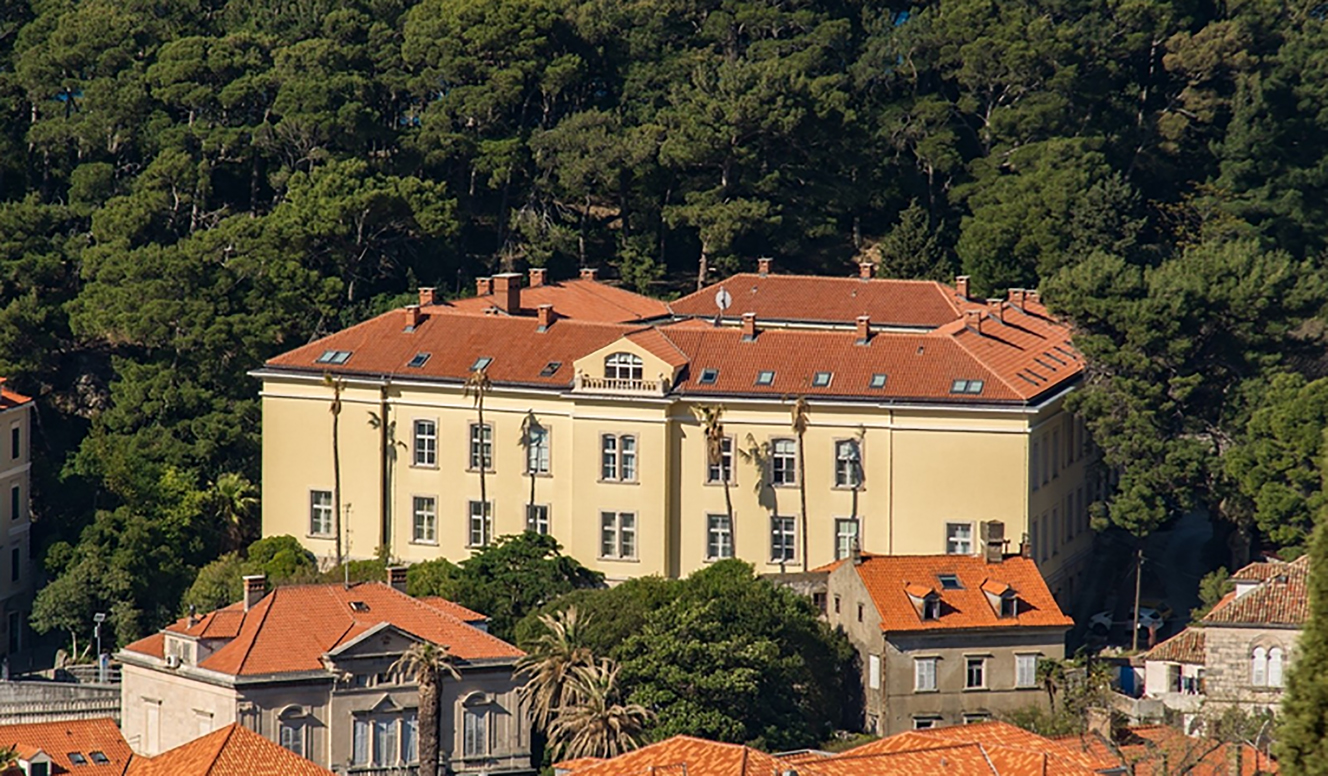
Inter-University Centre Dubrovnik, Croatia.
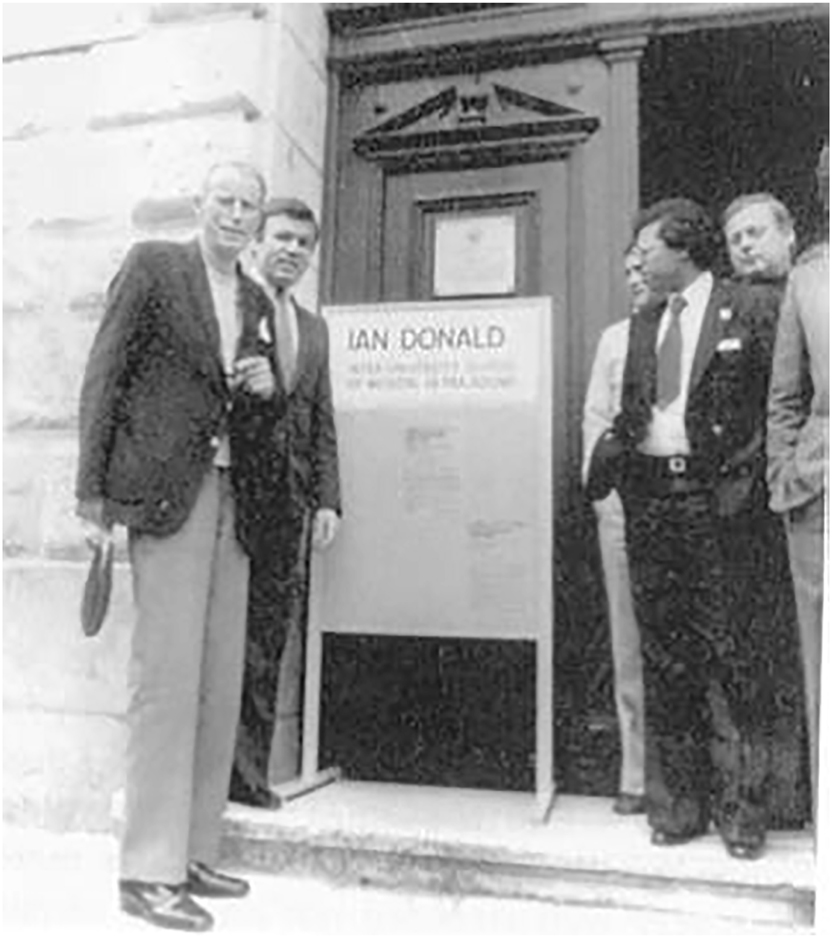
Ian Donald with the first generation of the School in Dubrovnik, Croatia in 1982.
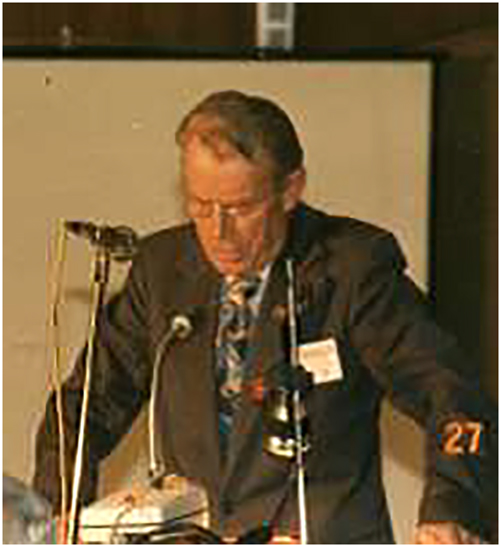
Professor Ian Donald during the opening speech of the Ian Donald School in Dubrovnik, Croatia in 1982.
Ian Donald and his wife Alix attended the first 12 courses held at the School. Since its foundation, the School has organized numerous advanced courses in Dubrovnik and throughout the world. After George Kossoff’s retirement, Asim Kurjak remained the director (Figure 4), while Frank Chervenak was named co-director (Figure 5).
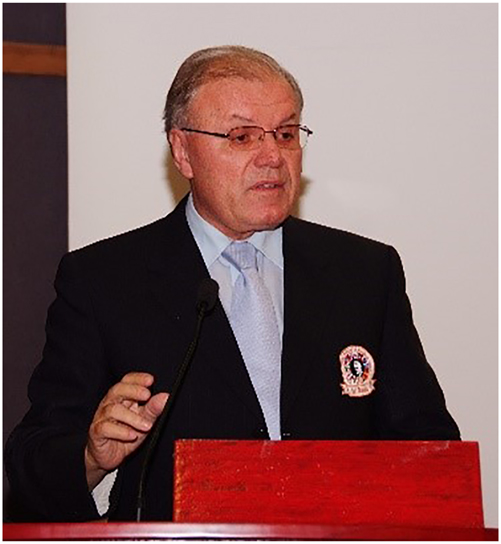
Director of Ian Donald School Professor Asim Kurjak (Croatia).
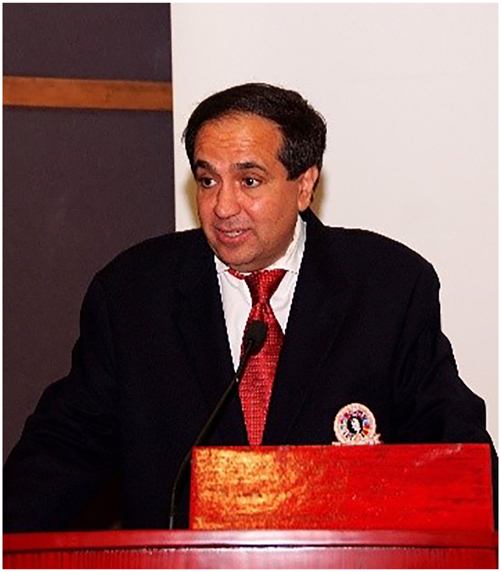
Co-director of Ian Donald School Professor Frank Chervenak (USA).
One of our many guests, Professor Tommy Thompson, former president of The World Federation for Ultrasound in Medicine and Biology, wrote:
„Recently, I had the opportunity of taking part in a rather unique and outstanding ultrasound conference held in Dubrovnik, organized by the Ultrasonic Institute, Medical School University of Zagreb. The Ian Donald course was outstanding in that it presented the most up-to-date, state-of-the-art information on ultrasound that is available today. The faculty was exceptional in that world leaders were brought together from more than a dozen different countries. The subjects covered included prenatal diagnosis and therapy of congenital fetal abnormalities, ultrasonic-guided puncture techniques, ultrasound in the management of female infertility, fetal, uterine, and ovarian blood flow determinations and application, and a roundtable on controversies in obstetric ultrasonography. There was a free flow of information and an unusual amount of participation by the audience, most of whom were authorities on many of these subjects in their own rights. This was an intense 5-day meeting dedicated to the higher levels of ultrasound knowledge and thinking in the world and it took place in a unique and beautiful setting on the Adriatic coast. It was by all standards a superb conference geared to the leading edge of present-day ultrasound knowledge. The Ultrasonic Institute from Zagreb should be congratulated for having developed a most timely, informative and well-presented international ultrasound School.“
The School has evolved to have almost 130 international Chapters or Branches. This permits the spread of knowledge throughout the world. Each Ian Donald Chapter has developed according to the character of the respective country and culture. This structure permits international cross-fertilization of ideas while remaining sensitive to the uniqueness of each participating country throughout the world.
The first Chapter was organized in Trieste, Italy by Giampaolo Mandruzzato who coordinated three successful courses (1991, 1992 and 1993). After that Professor Vincenzo D’Addario, Head of the Department of Obstetrics and Gynecology, University of Bari took over the position of director and was later joined by Professor Giovanni Monni from Department of Obstetrics and Gynecology, Microcitemico hospital in Cagliari, Sardinia.
In 1992, the first Ian Donald course was established in Granada, Spain with Professor Gonzalez-Gomez as the course director. The program of the School was soon recognized as an integral part of the postgraduate curriculum at the Medical School, University of Granada. Four successful courses have been organized in Granada. In 2002, the decision was made to continue the Spanish Ian Donald courses in Barcelona under the leadership of Professor Jose Maria Carrera. Under his guidance five successful courses were organized. From 2008 directors are Carmen Comas Gabriel and Bernat Serra.
In 1995, we were invited by Professor Cihat Sen to organize the first Ian Donald course in Istanbul, Turkey. Since then, the Turkish branch has been extremely active organizing courses on regular basis. The courses were very well attended and number of participants sometimes went up to 600.
Ian Donald courses started in Japan where Professor Kazuo Maeda organized the first course in Fukuoka in July 1998. Japan branch courses are organized every year in different city and with different course directors. The courses are well attended not only by physicians but also by enthusiastic nurses and midwives.
In 2000, Professor Sarraf from Al-Amal Hospital, Amman, Jordan established a Center for postgraduate teaching in ultrasound, joining the Ian Donald School. The center in Amman was a great opportunity for physicians to learn their skills in the field of ultrasound. The Amman Center for the Middle East initiated its first training course in 2001. Despite the fact that the idea of such a center was novel in the region, the interest and the participation of physicians who readily enrolled on the course were overwhelming. The positive response of the participants demonstrated the success and the welcoming of such courses.
There is a long-standing tradition of organizing annual advanced national courses in Athens by Professor Aris Antsaklis. In 2003 our Greek colleagues joined the Ian Donald School becoming the Greek branch with Aris Antsaklis as the branch director. The first course sponsored by the Ian Donald School was held in February 2003 in Athens and was attended by 300 participants.
In 2003 we welcomed the seventh branch of our School – the Indian Ian Donald School branch, organized in Agra. Professor N. Malhotra is a very well-known ultrasonic expert in India and was organizer of several advanced courses under the title „Agra Update – Obstetrics and Gynecology Ultrasound Course“. From 2003 he continued his courses under the direction of the Ian Donald School. Courses are very well attended and popular.
The next branch of the Ian Donald School was Hungary with Professor Zoltan Papp as director. Hungarian branch is organizing courses every year.
And this was only the beginning. Between 2003 and the time of publication of this paper about Ian Donald School many new branches were established in all parts of the world. You will find more information on the pages to follow.
We believe that the Ian Donald School in its 43rd year of existence has had a remarkable past and we look forward to a remarkable future.
Objectives of the School
The Ian Donald School is designed to address the needs of a clinician who has some experience in diagnostic ultrasound, but needs additional knowledge and practice in recent sonographic developments in both obstetrics and gynecology.
Objectives of the School are
To promote:
The science and art of ultrasound scanning
Research and education in the field of medical ultrasound
Continuous training in ultrasound
And facilitate the dissemination of information, especially by scientific publications, including Donald School Journal of Ultrasound in Obstetrics and Gynecology
To provide:
Expert advice to those entering the field of ultrasound
To increase:
Knowledge of methodology for implementing recent ultrasound advances
To contribute:
To the improvement of teaching standards by the introduction of computer technology and devices for telemedicine.
Educating for the future – new challenges for Ian Donald School
Immanuel Kant made a statement about education
“It is the education of a personal character, of a free being, who is able to maintain himself, and to take his proper place in society, keeping at the same time a proper sense of his own individuality.”
While we are living in a very different society from that of Immanuel Kant, his wisdom remains so true today. With the rapid development of information and communications technologies, industrial nations are transforming into societies in which knowledge is the most contested and valuable good – and the need for continuing education is even more important. At present, creativity and ingenuity comprise at least 50 per cent of the value-added chain. Just a few decades ago, the value of a machine tool was determined in large part by its material value and the cost of producing it. Today these factors account for only some 20 percent, while the biggest portion of the share consists of development, software, design, and downstream services – that is, in value-added factors with a high knowledge intensity. Knowledge has become the decisive factor for any institution competing globally. Do globalization and the enormous acceleration of social, economic, and political transformation processes demand a different kind of education? Education is the most important investment in the national economy. Anyone who doesn’t invest in education is left behind.
Learning means change, new modes of behavior, new structures, unfamiliar situations, and creativity. The increased speed at which we must acquire new knowledge, insights, and abilities is forcing us to divide learning into novel, shorter phases. The traditional choreography of learning with its long, rigidly defined School, job, and university educational periods is already obsolete. Self-organized, lifelong learning is becoming a necessity. Education is needed more than ever to give the individual the proper orientation to make good judgments. Only on this basis can he or she think and act self-sufficiently, self-confidently and self-effectively.
A most important factor which has influenced the changes occurring in education has been the installation and development of the Internet and electronic multimedia techniques. Traditional education as well as contemporary education is supported by informatics technologies in a unique system of flexible education. To use the advantages of flexible education, it is necessary to combine different forms of learning.
Indeed, Donald Schools must reinvent themselves to remain relevant to the current generation. The focus in an Ian Donald School is on knowledge augmentation and not on grades. Great learners are the product of great educators. It is hoped that Ian Donald School educators will be true, dedicated “human amplifiers”, turning education into a memorable experience.
In our newly formed Fellowship program (Zagreb, Doha, Dubai, Khartoum), upon graduation, student laureates will earn a specialized diploma of Ultrasound in Obstetrics and Gynecology, with a leadership position in the workplace. This is done in the belief that education must be driven by innovative thinking, adaptability, and worldwide collaboration. Wherever thinking happens, ideas follow, knowledge grows, and people discover new ways to unlock their potential. Although in its infancy, the fellowship program has blossomed with its wide acceptability.
To be successful, the Ian Donald School developed library with many basic textbooks on clinical use of ultrasound in obstetrics and gynecology as well as advanced monographs and atlases for more advanced students (Figure 6).
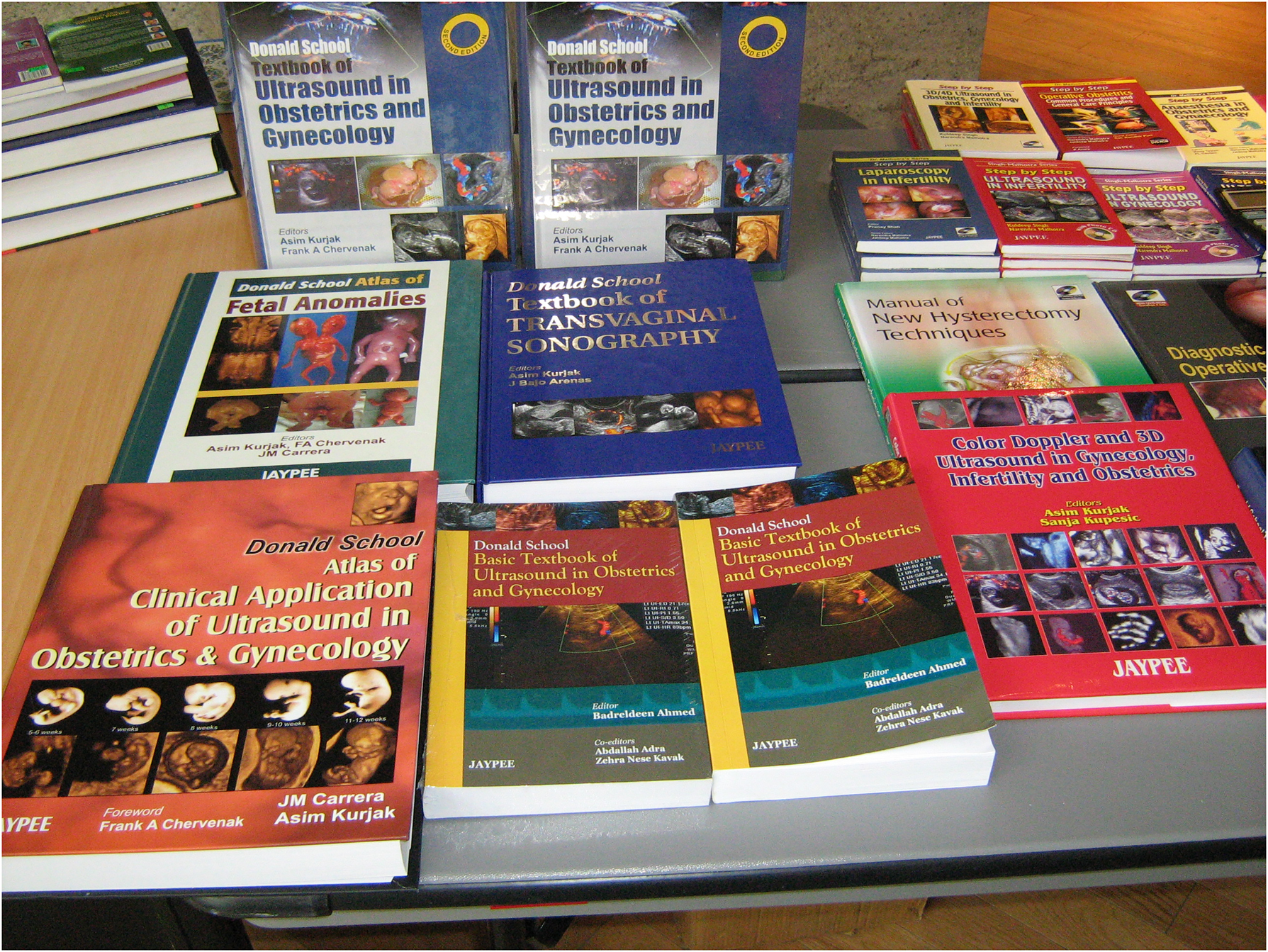
Books from Ian Donald School library.
Global outreach and local adaptation
Professor Sanja Kupesic and her team described and introduced our new project of distance learning to School. The distance learning campaign aims to establish a distinct visual identity for the Ian Donald School and to unify all its various branches and entities into a single voice. It seeks to engage, inspire curiosity and raise awareness about the Ian Donald School and supports its continued growth, giving it higher visibility and helping people everywhere to understand its work and its future goals. In general, distance learning reflects a universal human need to learn and understand the world around them. In our new virtual School, the campus will be virtual – students will be able to attend classes from around the world. The Ian Donald School will be administered through a plexus of real-time information arteries. Campus activities and class sessions will be monitored to gauge educator performance and student learning progress. Advanced ultrasound technologies will be immersed into the learning process. It will certainly help to develop a “lifelong learning way of life”.
Undoubtedly, Donald Schools have to reinvent themselves in order to remain attractive to the younger generation, as well as stay a success story in globalized medicine. With this innovation we sincerely hope that our School will stay an internationally recognized brand, representing the future of education as it faces new global challenges and the changing needs of future generations of first class ultrasonic experts.
With distant learning we are creating a constructive, open forum for Donald School students that do not usually have a chance to interact, to create innovative, appropriate, current solutions for the changing needs of diagnostic ultrasound in the global community.
Professor Kupesic and her team, and all national School directors will contribute to monitoring current and future challenges and their impact on education in a comprehensive manner on a global scale through highlighting and expanding innovative approaches to major education challenges. They will help develop strategies to establish new and enduring educational patterns, initiating actions and concrete solutions to rise to the 21st century global challenges, and acquiring the ability to anticipate future challenges.
We hope to identify opportunities to shape a global educational vision for the 21st century under the theme of Donald School distance learning. The future is built on the past. The Ian Donald School has a remarkable past. It is important that teachers and students stay as futuristically thinking scientists and teachers.
In a knowledge society, where competitive edge is directly tied to innovation, the Ian Donald School has to move forward. The slumber is over. The renaissance has been long overdue.
Kant was right – now more than ever.
Illustrations of Ian Donald School courses and fellowship programs
Many Ian Donald School courses and meetings have been organized during the past several years (Figure 7).
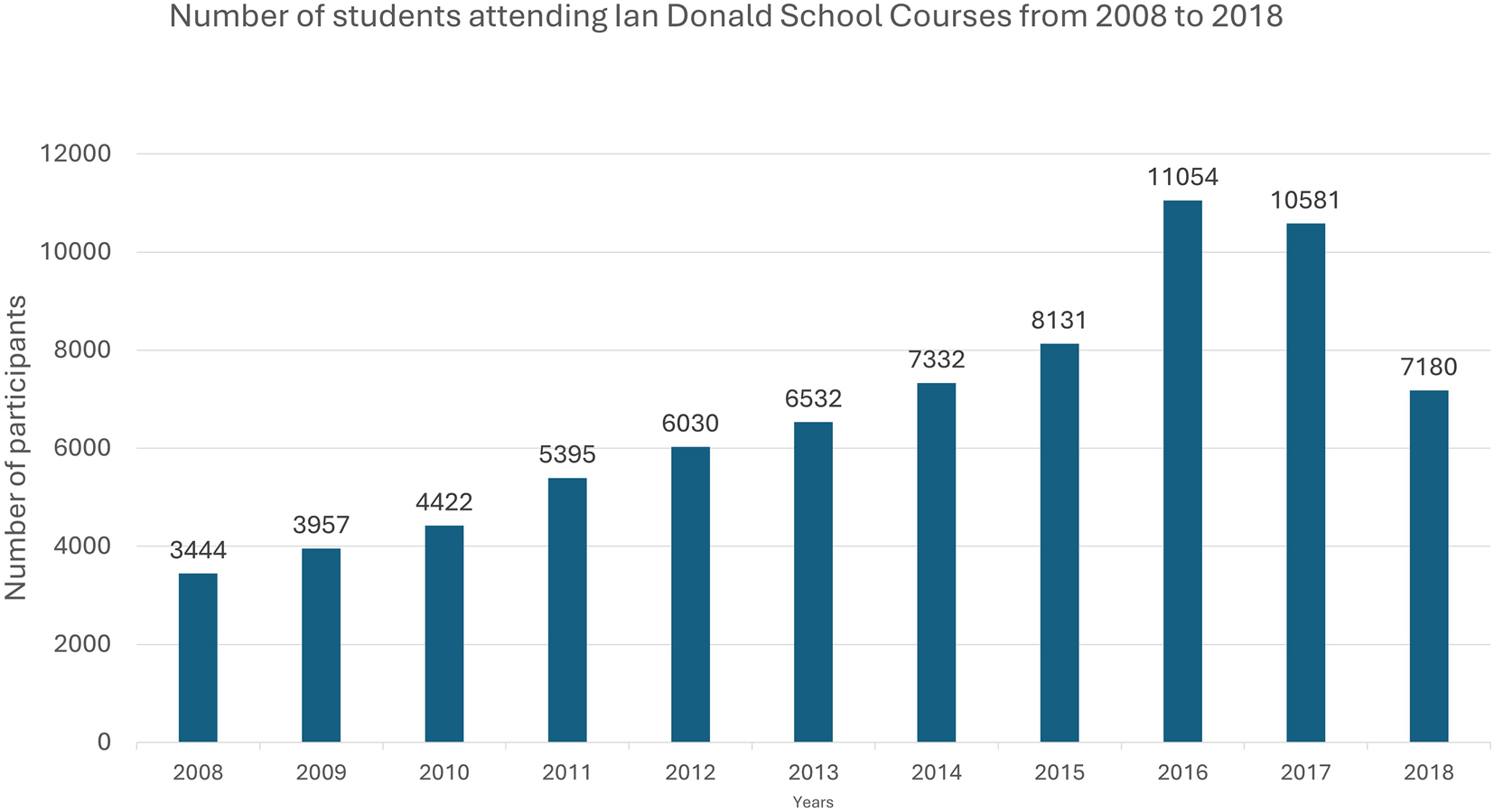
Number of participants of Donald School courses from the year 2008 to 2019.
As the picture can show more than thousand words, we are attaching photos from very successful Ian Donald ScFhool Courses all over the world (Figures 8, 9, 10, 11, 12, 13, 14, and 15).

Group photo of students enrolled in fellowship program in Doha, Qatar in 2010.
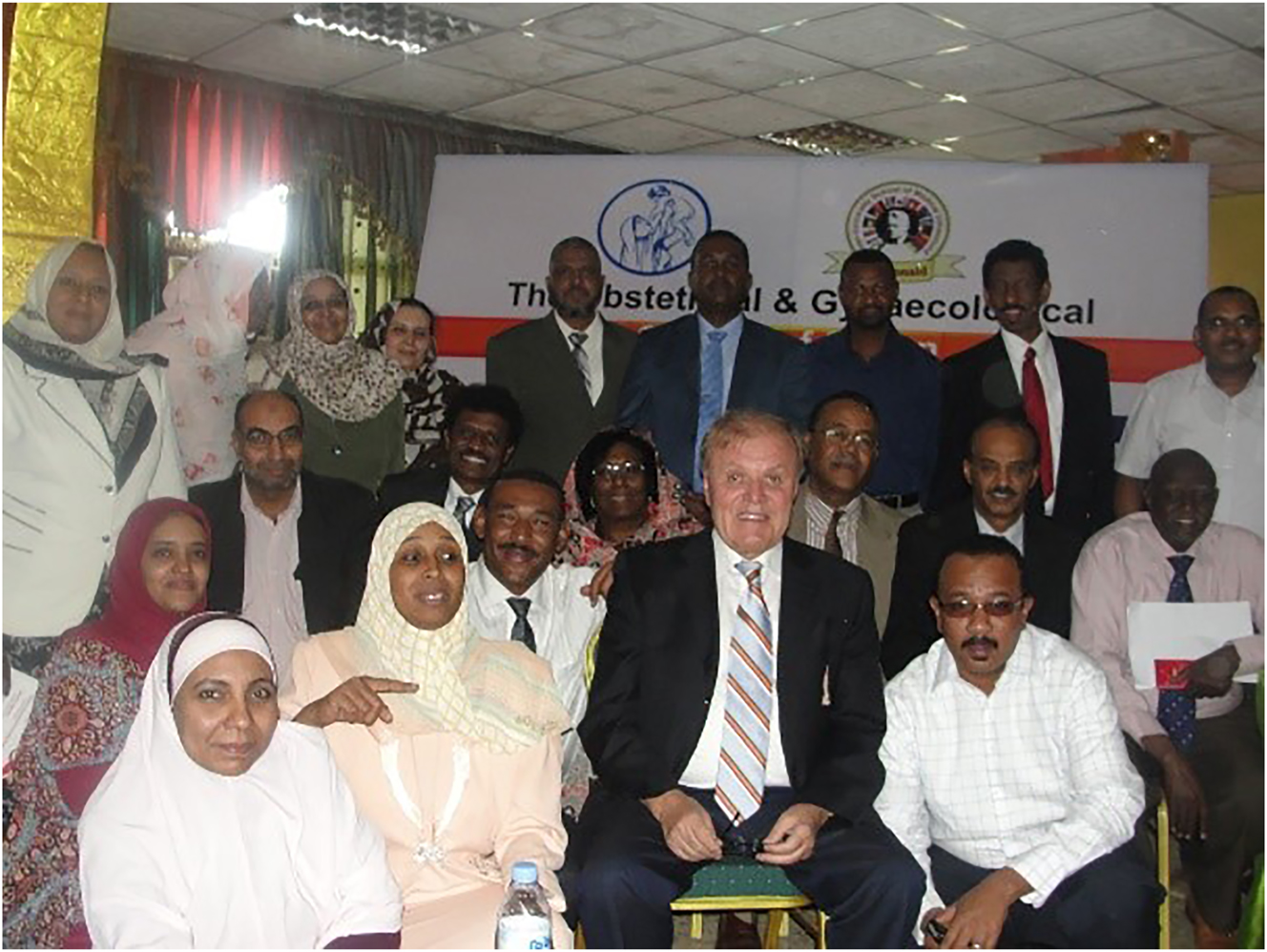
Graduation of fellowship students in Khartoum, Sudan in 2011.
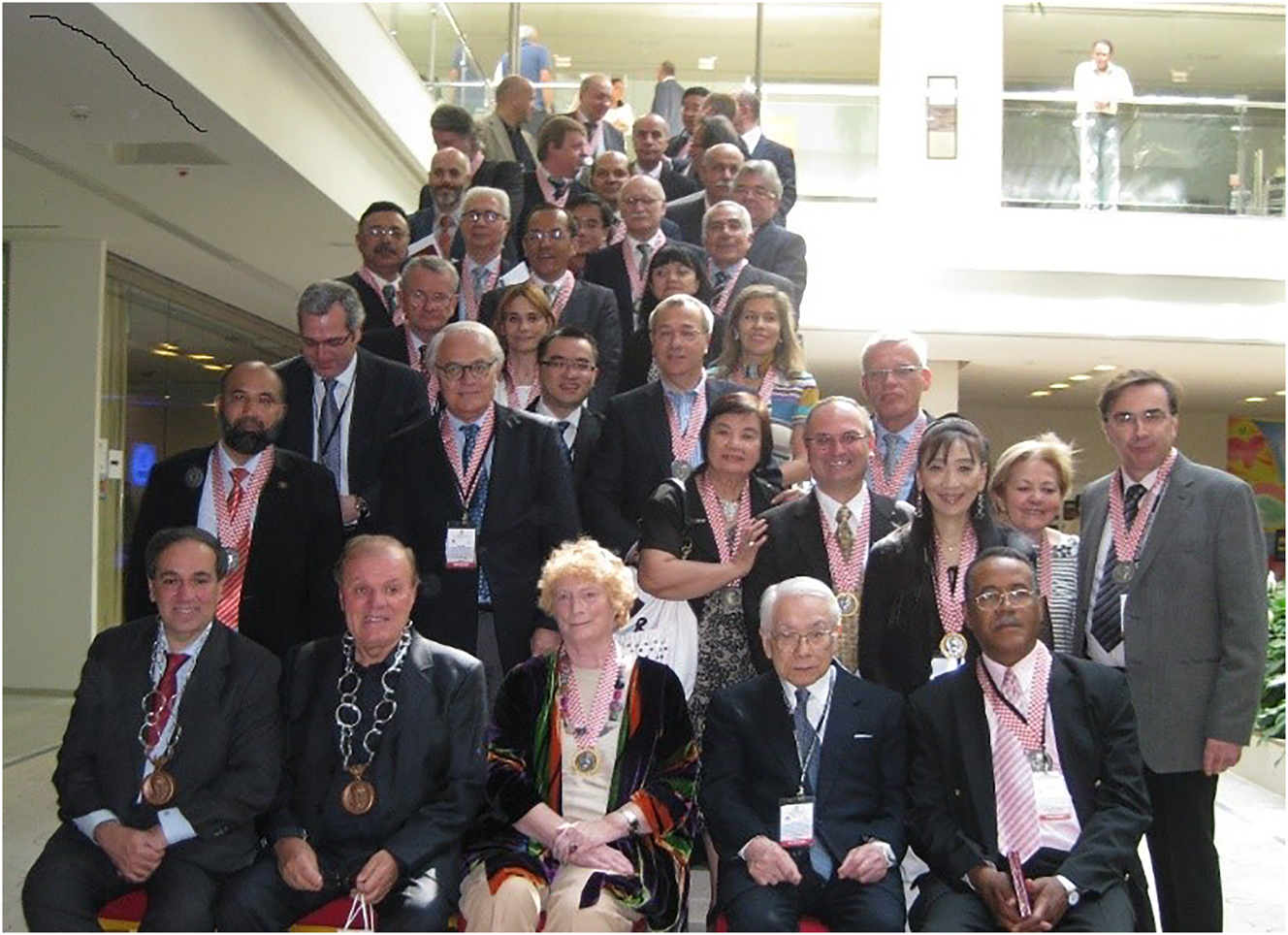
Ian Donald School Global Congress held in Dubrovnik in 2011. Ian Donald’s daughter Alix joined the meeting as a guest (sitting in the middle of the first row).
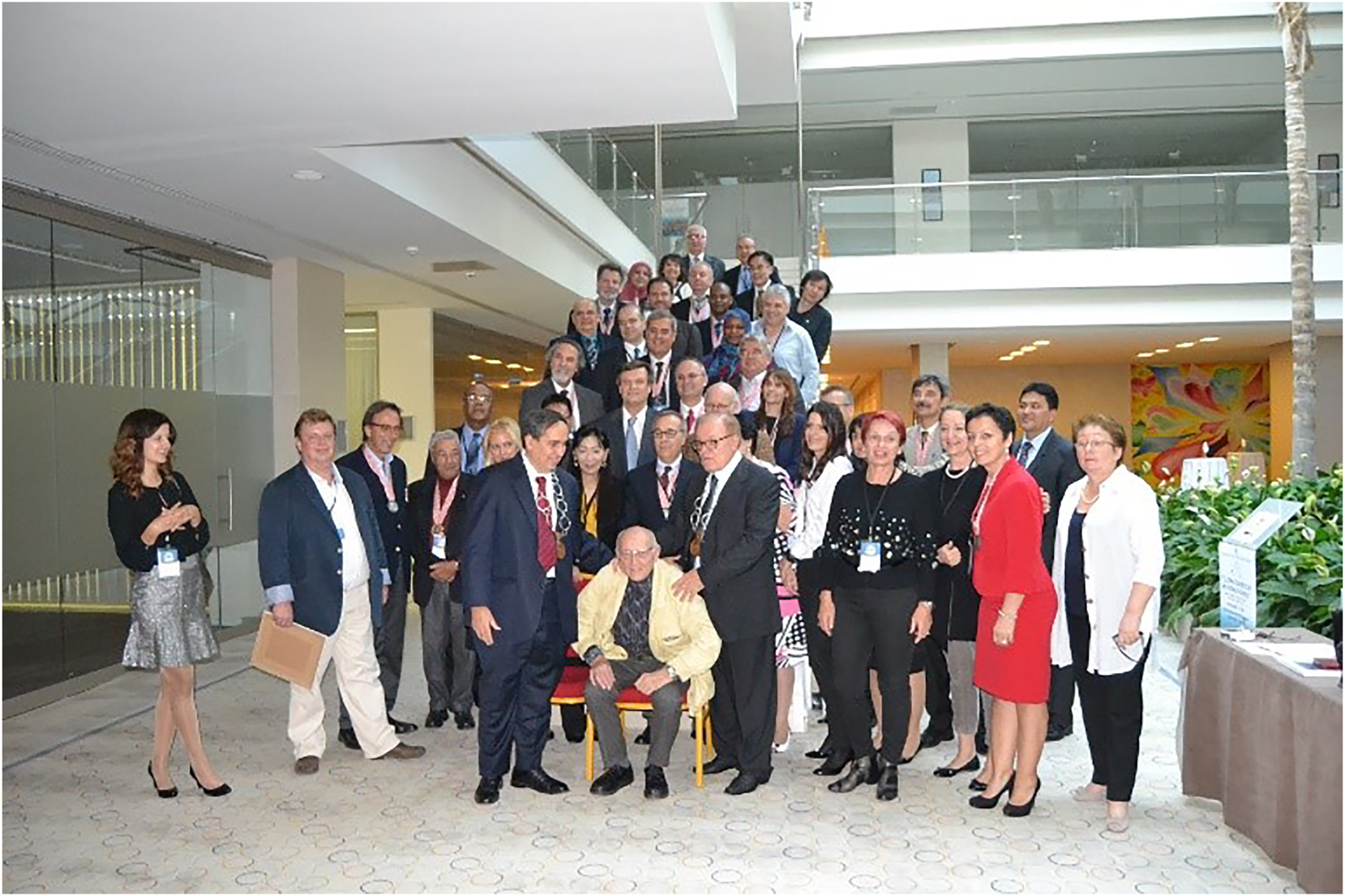
Ian Donald School Global Congress, Dubrovnik 2013.
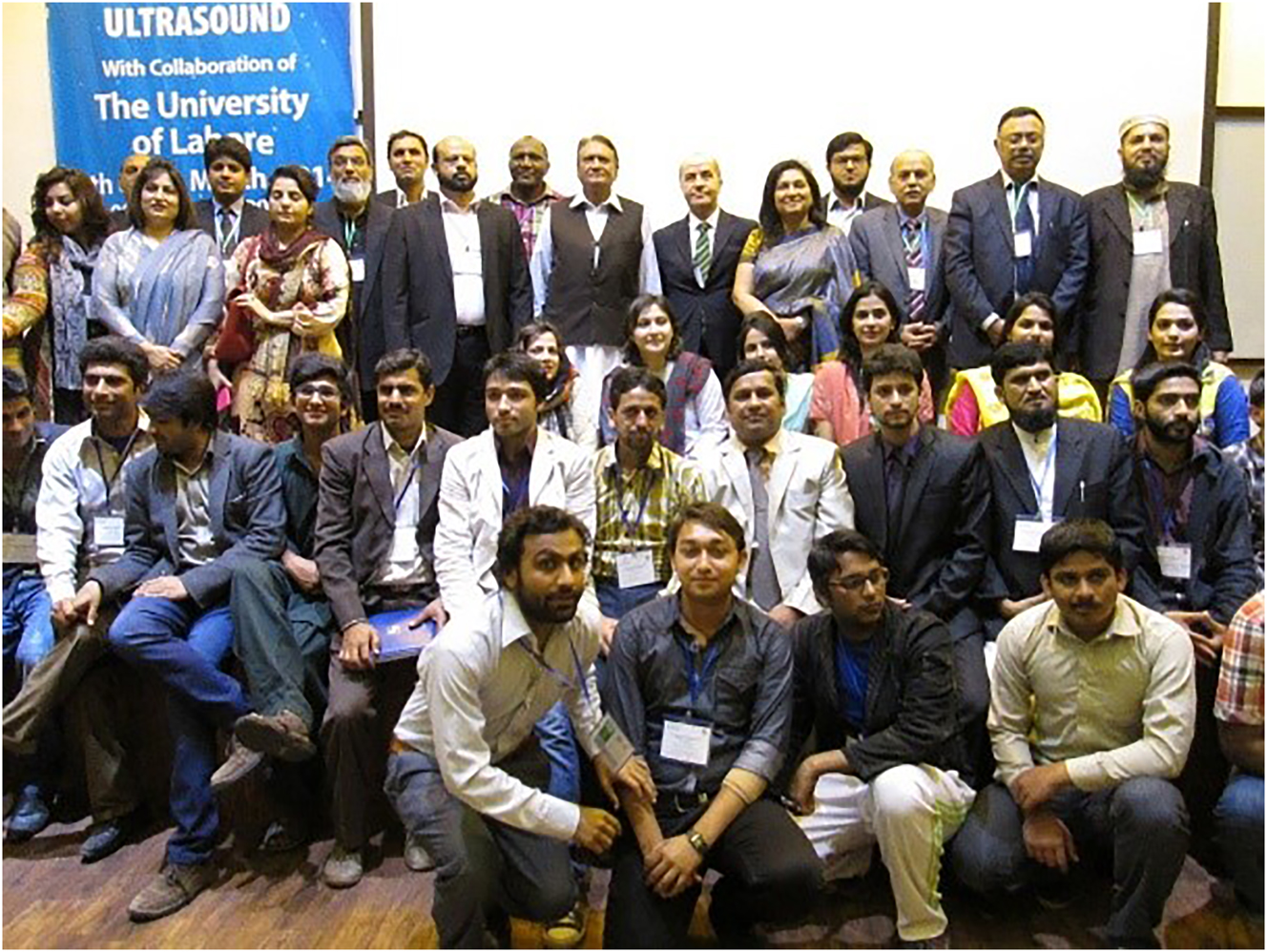
Ian Donald School course in Lahore, Pakistan, March 7-8, 2014.
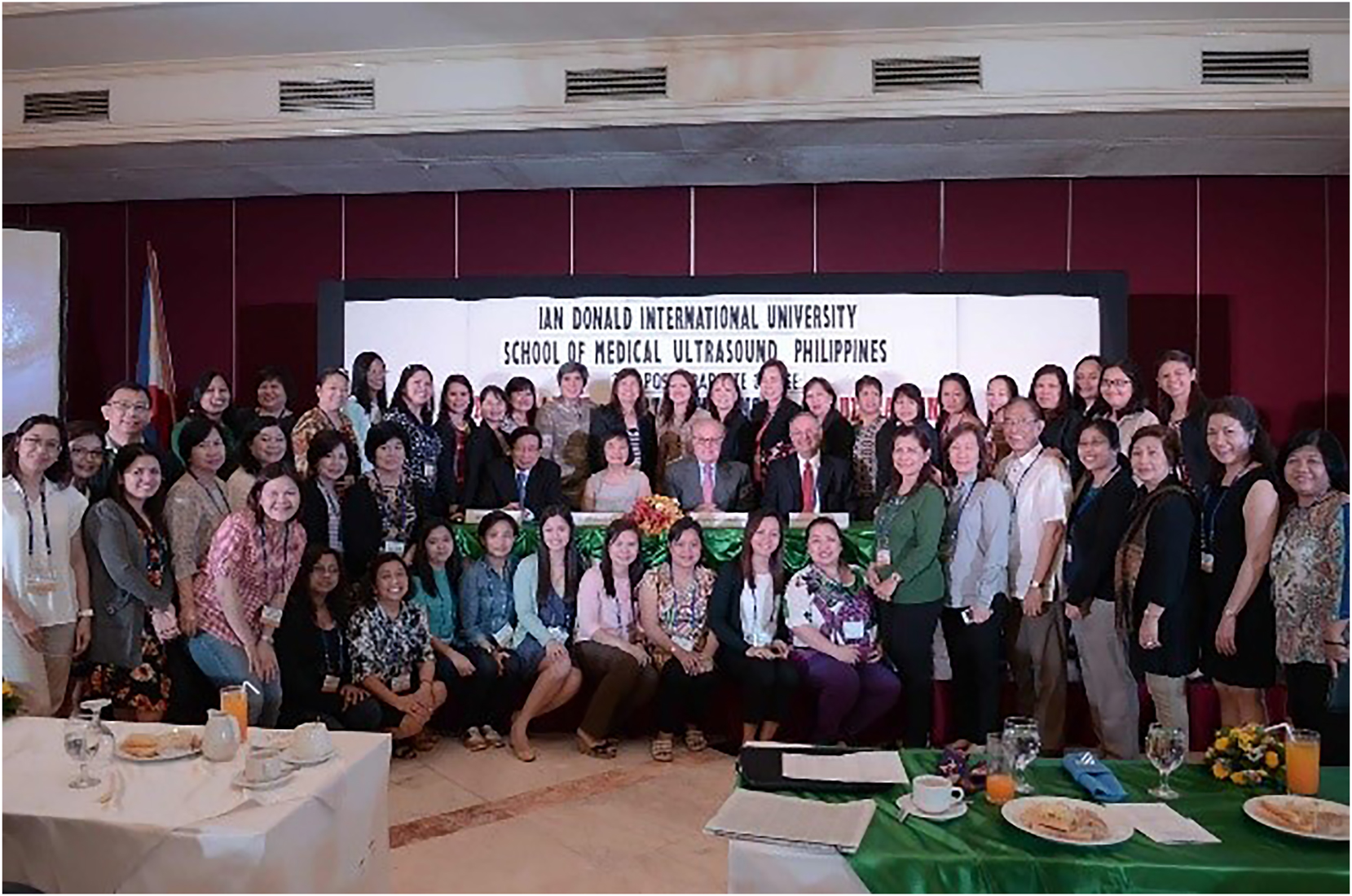
Ian Donald School course in Davao city, Philippines, November 23-24, 2014.

Ian Donald School course in Surgut, Russia, January 23-24, 2016.
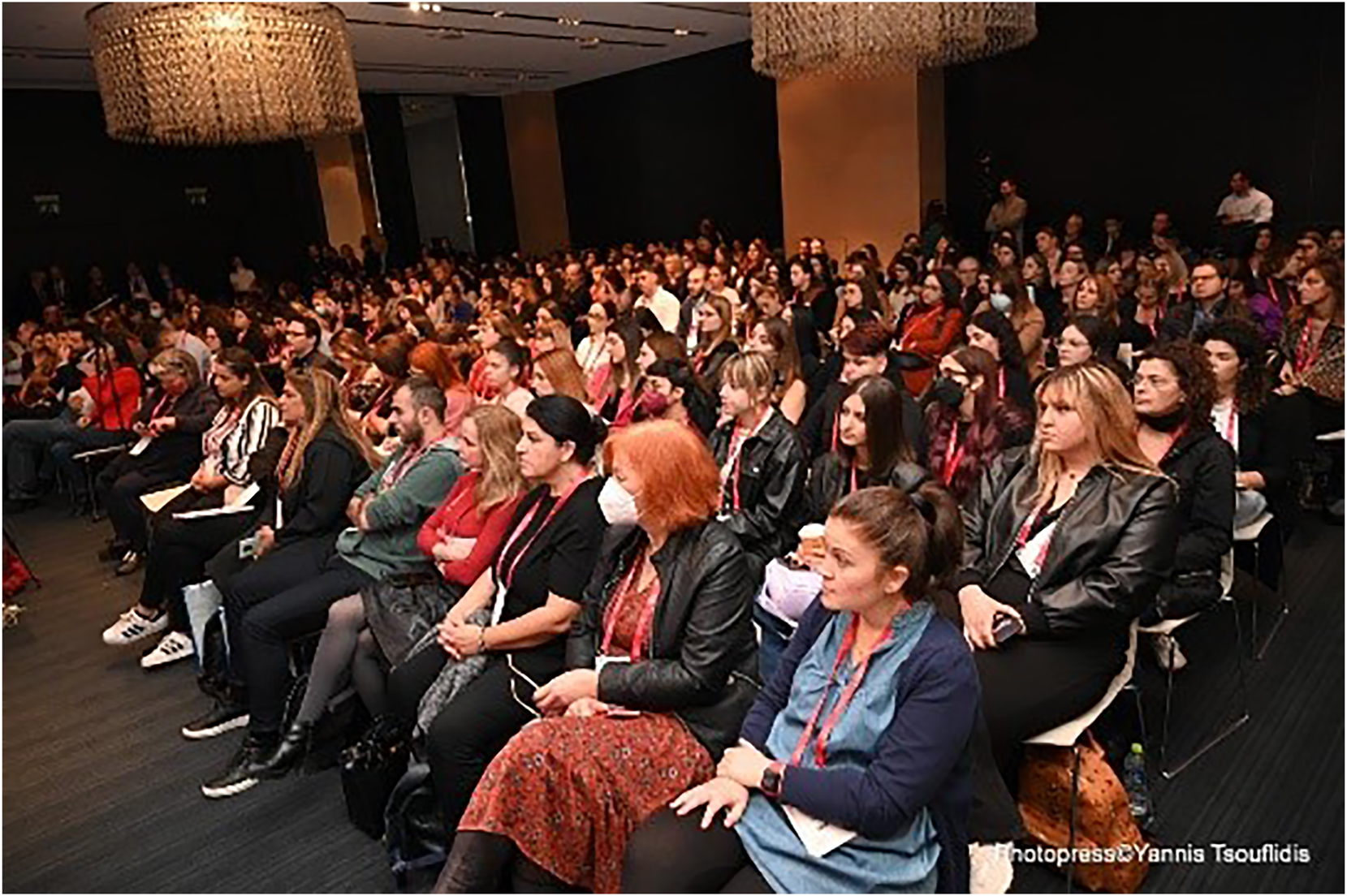
Ian Donald School course in Thessaloniki, Greece in 2022.
Conclusions
We live in a troubled world in which national, cultural, religious, and political differences separate people – sometimes to the point of disastrous wars. With all that mankind has achieved, it is amazing that such parochial differences continue to do so much harm. There is much that the leaders of the world can learn from the global success of the Ian Donald Inter-University School of Ultrasound.
This School is a living tribute to Ian Donald – the visionary physician who pioneered ultrasound in obstetrics and gynecology. The School is dedicated to the improvement of all aspects of perinatal and gynecologic care. The discovery of ultrasound has enabled us to see and care for the fetus as a patient as well as visualize pelvic organs noninvasively – and has therefore brought obstetric and gynecologic diagnosis out of the dark ages. It has been suggested – with very little exaggeration-- that the three greatest contributions to modern obstetrics and gynecology have been ultrasound, ultrasound, and ultrasound.
Our School is based upon state-of-the-art science as well as a collegiality that transcends national, cultural, religious, and political differences. Teachers and students alike are united in our efforts to improve the care of women throughout the world. The international brotherhood and sisterhood that exists among physician leaders from over 100 of the world’s countries is a special bond that represents globalization at its best. Instructors donate their time without reimbursement as their educational efforts are truly a labor of love.
We are grateful to all the doctors who have given so much of themselves to make the Ian Donald Inter-University School of Ultrasound a testament to the power of the human spirit to work collaboratively throughout the world for the betterment of mankind. We believe that Ian Donald is smiling down from heaven on the School that bears his name.
-
Research ethics: Not applicable.
-
Informed consent: Not applicable.
-
Author contributions: All authors have accepted responsibility for the entire content of this manuscript and approved its submission.
-
Use of Large Language Models, AI and Machine Learning Tools: None declared.
-
Conflict of interests: The authors state no conflict of interest.
-
Research funding: None declared.
-
Data availability: Not applicable.
References
1. Ian Donald School. Ian Donald School – past, present and future, 3rd ed. New Delhi: Dialog India Services; 2020.Search in Google Scholar
2. Kurjak, A, Chervenak, FA. Educating for the future – new challenges for Ian Donald School. Donald Sch J Ultrasound Obstet Gynecol 2020;4:v.Search in Google Scholar
3. Kurjak, A. Distance learning and artificial intelligence: new challenges for Donald School educational activities. Donald Sch J Ultrasound Obstet Gynecol 2021;15:323–5. https://doi.org/10.5005/jp-journals-10009-1831.Search in Google Scholar
4. Kimata Pooh, R, Kurjak, A. Global activity of Ian Donald ultrasound education. Donald Sch J Ultrasound Obstet Gynecol 2013;7:323–8. https://doi.org/10.5005/jp-journals-10009-1300.Search in Google Scholar
5. Kupesic-Plavsic, S. Is Ian Donald inter-university School of medical ultrasound ready for distance learning? Donald Sch J Ultrasound Obstet Gynecol 2014;8:6–10. https://doi.org/10.5005/jp-journals-10009-1327.Search in Google Scholar
© 2025 the author(s), published by De Gruyter, Berlin/Boston
This work is licensed under the Creative Commons Attribution 4.0 International License.
Articles in the same Issue
- Frontmatter
- Editorial
- Perinatal responsibility in a fragmented world: reflections from the 2024 international academy of perinatal medicine New York meeting
- Corner of Academy
- Global education – impressive results of Ian Donald School
- Cicero’s universal law: a timeless guide to reproductive justice
- Enhancing patient understanding in obstetrics: the role of generative AI in simplifying informed consent for labor induction with oxytocin
- Faculty retention in academic OB/GYN: comprehensive strategies and future directions
- Hemolytic disease of the fetus and newborn: pregnant person’s and fetal immune systems interaction
- Viability of extremely premature neonates: clinical approaches and outcomes
- Reviews
- Standardizing cord clamping: bridging physiology and recommendations from leading societies
- Thrombotic thrombocytopenic purpura in pregnancy: a comprehensive review
- Mini Review
- Looking for a needle in a haystack: a case study of rare disease care in neonatology
- Opinion Paper
- Hemorrhagic placental lesions on ultrasound: a continuum of placental abruption
- Original Articles – Obstetrics
- Amnioreduction safety in singleton pregnancies; systematic review and meta-analysis
- Outpatient management of prelabour rupture of membranes (PROM) at term – a re-evaluation and contribution to the current debate
- Breastfeeding in HIV-positive mothers under optimized conditions: ‘real-life’ results from a well-resourced healthcare setting
- Intervention using the Robson classification as a tool to reduce cesarean section rates in six public hospitals in Brazil
- Short Communication
- Continuous positive airway pressure vs. high velocity nasal cannula for weaning respiratory support of preterm infants
Articles in the same Issue
- Frontmatter
- Editorial
- Perinatal responsibility in a fragmented world: reflections from the 2024 international academy of perinatal medicine New York meeting
- Corner of Academy
- Global education – impressive results of Ian Donald School
- Cicero’s universal law: a timeless guide to reproductive justice
- Enhancing patient understanding in obstetrics: the role of generative AI in simplifying informed consent for labor induction with oxytocin
- Faculty retention in academic OB/GYN: comprehensive strategies and future directions
- Hemolytic disease of the fetus and newborn: pregnant person’s and fetal immune systems interaction
- Viability of extremely premature neonates: clinical approaches and outcomes
- Reviews
- Standardizing cord clamping: bridging physiology and recommendations from leading societies
- Thrombotic thrombocytopenic purpura in pregnancy: a comprehensive review
- Mini Review
- Looking for a needle in a haystack: a case study of rare disease care in neonatology
- Opinion Paper
- Hemorrhagic placental lesions on ultrasound: a continuum of placental abruption
- Original Articles – Obstetrics
- Amnioreduction safety in singleton pregnancies; systematic review and meta-analysis
- Outpatient management of prelabour rupture of membranes (PROM) at term – a re-evaluation and contribution to the current debate
- Breastfeeding in HIV-positive mothers under optimized conditions: ‘real-life’ results from a well-resourced healthcare setting
- Intervention using the Robson classification as a tool to reduce cesarean section rates in six public hospitals in Brazil
- Short Communication
- Continuous positive airway pressure vs. high velocity nasal cannula for weaning respiratory support of preterm infants

